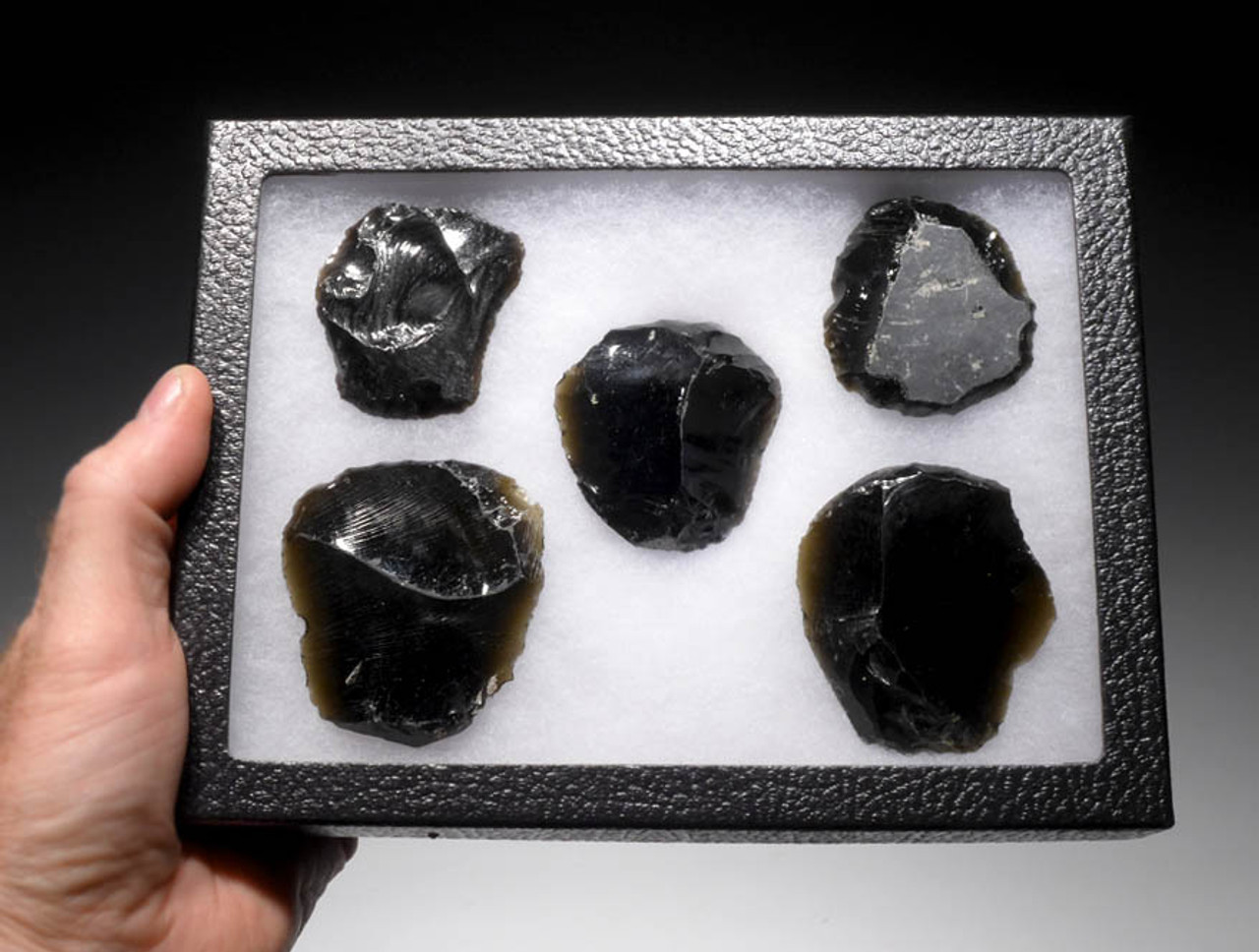Product Description
ID
|
Tools
|
||
FOUND
|
Mexico
|
||
AGE
|
200 B.C. - 650 A.D.
|
||
SIZE
|
2.6" - 2" long
|
||
CONDITION
|
INTACT WITH NO REPAIR
|
||
NOTE
|
RARE AND MADE OF PRIZED
|
||
INCLUDES DISPLAY BOX - Actual Item - One Only
|
|||
This is a VERY RARE set of complete unifacial blades and scrapers from the ancient Pre-Columbian Indian culture of Teotihuacan in Mexico. All are made of the MOST INCREDIBLE green transparent obsidian, a lithic once reserved only for noble and ruling classes of people. Each is a LARGE and complete scraper or blade.
Sources in the Valley of Mexico, which fell under Teotihuacan control during the Early Classic, were Pachuca, Otumba, and Chicoloapan. Obsidian from Pachuca is notable because of its unique green-gold color and its internal purity which makes it one of the highest quality obsidian sources in Mesoamerica. It was much sought after and widely traded. Green obsidian is also found in the area of Tulancingo, but is distinct from Pachuca obsidian because of its internal opacity (e.g., it is a more milky or clouded green).
All pieces in this superb and scarce collection are INTACT AS MADE WITH NO DAMAGE OR REPAIR. Includes our written unconditional lifetime certificate of GUARANTEED AUTHENTIC.
In the first millennium A.D., the central American mega-city of Teotihuacan was THE largest city in the pre-Columbian Americas and had a broad influence on its neighboring cultures both, in simultaneous existence to it and even long after. At its peak in 450 A.D., with an estimated population exceeding 200,000 at this time, it was one of the largest cities in the world. The founders of this great city are a mystery and much debate has circled around who exactly built the city. Because the inhabitants seem to have been multi-ethnic (Nahua, Otomi, Totonac and Mayan) the culture is not attributed to a specific ethnicity or tribe but is called TEOTIHUACAN or TEOTIHUACANO.
Teotihuacan was an enormous industrial city and trading center housing a variety of trades and craftspeople. The quality of artistry in the thousands of mural paintings from Teotihuacan artists rivaled anything that was to be produced by many master painters of Renaissance Europe much later in time. Perhaps, the most famous industry the city was known for was its extensive production of obsidian objects.
Many of the same gods worshipped by other pre-Columbian cultures of the surrounding region were worshipped by the inhabitants of Teotihuacan. Gods such as the Feathered Serpent and the rain god, which were later worshipped by the Aztecs in their own culture. It is believed the Mayans and later period Aztecs, along with many other tribes, were heavily influenced by Teotihuacan and like those cultures, human sacrifice was practiced in Teotihuacan. This is evidenced by numerous human skeletons showing signs of ritual sacrifice, excavated from the sites where the pyramids were built.
The end of Teotihuacan is as much a mystery as its beginning. Most recent studies now show the city's decline began some time around the 6th century A.D. and may have been caused not by a conquering neighbor but by internal civil unrest and uprising.
 US DOLLAR
US DOLLAR
 EURO
EURO
 AUSTRALIAN DOLLAR
AUSTRALIAN DOLLAR
 CANADIAN DOLLAR
CANADIAN DOLLAR
 POUND STERLING
POUND STERLING












